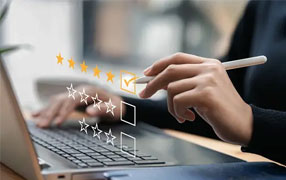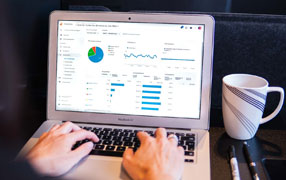.jpg)
Marketing Automation
How to create an effective landing page for your next campaign
What is a landing page?
Essential features
Achieving more clicks
Lead capture
A landing is part of a marketing strategy to direct leads to a standalone web page with a unique value proposition as part of a campaign. The web page is usually located in a distinct location, separate from the main website, and has the singular function of converting leads. A landing page should not contain educational or informational content, but instead focus on grabbing attention, creating an irresistible call to action, and making sales. Marketing automation software for agencies and in-house marketing teams is set up to capture data from this page, and guide further campaign strategies by scoring leads and generating clicks reports.
The content on each landing page will be determined by the exact purpose of the campaign, whether that be to refocus a product, boost numbers for a poorly-performing service or introduce a new venture to market. In essence, the landing page is designed to be part of the sales funnel, but works externally and in parallel with the internal pipeline for lead funnels.
The types of landing page are:
1. A Lead Generation Page
This is designed to capture the data of its visitors so the sales team can follow-up and build a relationship with that lead. Lead generation pages are most popular with B2B sales.
2. A Click-through Page
The click through page is built to direct its visitors towards making a sale directly through an ecommerce site, product page or subscription service. Click-through pages are most often used by B2C marketing teams.

Now we’ve explained the purpose of a landing page and hopefully demonstrated its usefulness, read on to find out how you should go about creating a successful one for your next marketing campaign.
While the landing page is a product of your campaign niche and so cannot be easily formulated, there are three content pillars for an effective landing page that you should consider every time.
1. Attention-grabbing headline
The sole purpose of the headline is to grab the audience’s focus. Whether this is presenting the solution to a problem or the product’s unique benefits, it needs to be:
- Short
- Eye-catching
- Active
- Interesting
The headline is the thing that determines whether or not the viewers are going to go on to engage with the rest of the content on your landing page; which is why even though it may be the shortest part of your landing page, it needs the most consideration.
2. The offer
The second part of your landing page is the offering: in essence, what your campaign is about, what you’re trying to promote or sell, and why the audience should be interested. If you cannot accurately convey what it is you’re selling and why they should care, you have little to no chance of converting a sale out of them.

When describing your offer, you should refrain from over-explaining, using too much written content or technical language. Focus on creating informational images and clear and concise descriptions. Remember not to stray into generalisations for the sake of concision because they will diminish your ability to convey your unique value offering.
3. Call to action
The call to action is the finishing touch to your successful landing page. This is the thing that finally encourages the viewer to purchase your product, click to your ecommerce site or get in contact with your sales team.
Make a call to action that is instructional and simple so it can easily be followed by your audience. Remember that one of the key marketing rules is to create as few steps between your brand being discovered, and a purchase being made. Signpost the audience clearly in the direction you want them to go and they will follow.
When creating your landing page, consider one of the fundamentals of marketing: who is the target audience and why? Do you have data to back this up? Check the audience and marketing data collected by your CRM system on contact purchasing history or campaign successes.
Most CRM systems will offer a reports or analytics tool as part of their core customer relationship module. The best way to understand the best set-up for your landing page is to utilise A/B Testing and make an analysis about your main campaign using reports into clicks and conversions.

If the supporting proof is still not enough to convert the lead, or if the purpose of your campaign was to generate more active leads for the sales team to follow, then lead capture is your last and most important consideration. Without an effective lead capture, leads that drop away are wasted with no opportunity to recapture them, and that will increase the number of your PPC (pay per click) to an unfavourable level.
Provide the customer with your own contact information: ideally linked in a way that allows the customer to open up a blank email or make a phone call directly from the landing page. Better yet, you should also provide an information form that allows the viewer to submit their details in order to be contacted by a member of the sales team at a later time. Using an integrated system, automations can stream the inputted information directly into your CRM system for convenient and fast follow up opportunities for the sales team. This also provides a larger window of opportunity for the sales rep to pull together a personalised pitch or walk-through.
A live chat-box on the page can be super resourceful if you expect to have a lot of questions; i.e. if your product or service is complex, expensive, or is available in a number of different formats. The downside of a chatbox is that it should ideally be staffed around the clock; taking into consideration time zones and alternating schedules. A poorly managed chat box will decrease customer satisfaction, and is worse than having no chat box at all.

30 days free trial. No credit card required
 One powerful platform
One powerful platform
 Simple to use
Simple to use
 Comprehensive
Comprehensive






